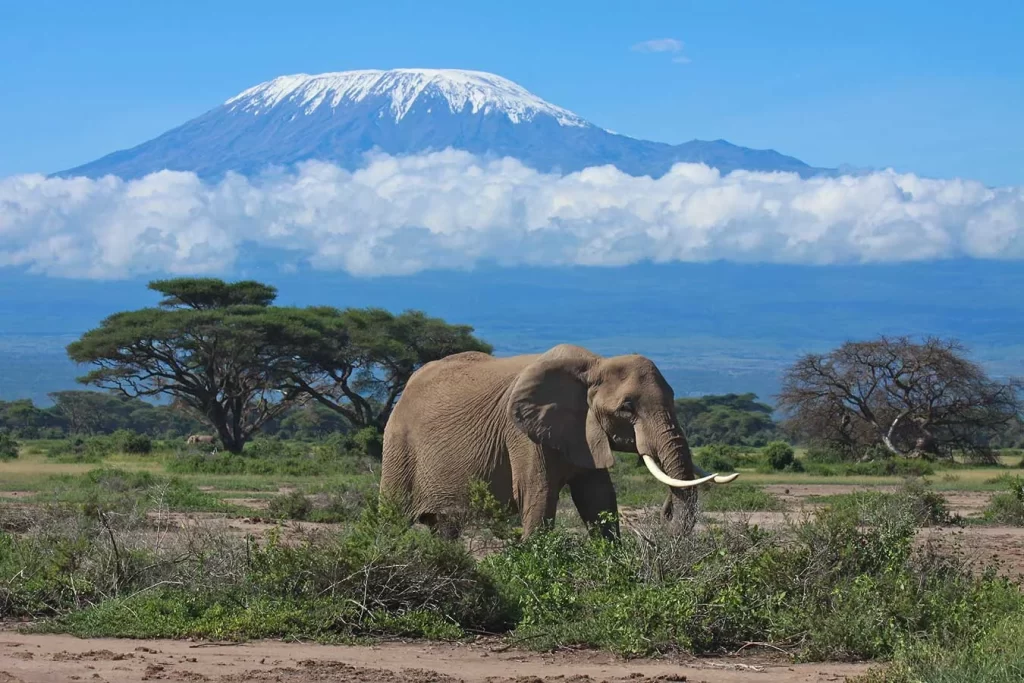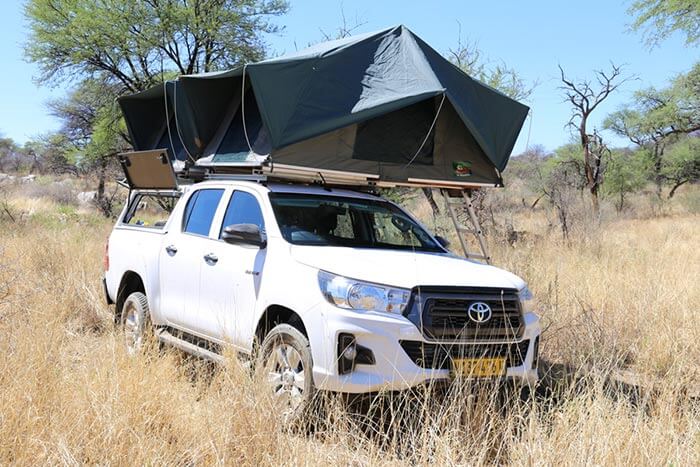4×4 Self Drive Guide to Amboseli National Park
Amboseli National Park is one of the premier national parks in Kenya, alongside Masai Mara National Reserve and Lake Nakuru National Park. The park is recognized as a habitat for the African Elephant because of the significant population of Elephants present there. The park derives its name from the indigenous Masai term Amboseli, signifying “salty dust.” Amboseli National Park features red soil that gets dust-laden in the dry season and muddy during the rainy season.
Officially designated as Masai Amboseli Game Reserve, it encompasses an area of 392 square kilometers. It was designated as the Southern Reserve in 1906. In 1948, it was returned to local administration and designated as a game reserve. In 1974, Amboseli National Park was designated as a national reserve. The primary objective of designating the park was to save the distinctive ecological present in the region. In 1991, Amboseli National Park was designated a UNESCO World Heritage Site and is managed by the Kenya Wildlife Service.
Amboseli National Park is one of Africa’s premier parks, renowned for its substantial population of African elephants. Nature enthusiasts can explore five distinct environments, including the desiccated bed of Lake Amboseli and the expansive open savannah grassland. The park hosts more than 400 avian species, including 47 raptor species.
Amboseli is a Kenyan national park adjacent to the world’s tallest free-standing mountain, Mt. Kilimanjaro. It provides a distinct perspective of the mountain, particularly during the early morning or late evening. It adjoins Tsavo East National Park and Tsavo West National Park. Joseph Thompson was the inaugural European to explore the park, which locals regarded as a perilous area. Subsequent to his arrival, the park gates were opened to the public, attracting a multitude of visitors.

Directions to Amboseli National Park
Amboseli Park is accessible by both road and air, situated in the southeastern region of Kenya’s capital, Nairobi. There are two routes from Nairobi that lead directly to Amboseli National Park. One route is from Nairobi to Namanga, covering a distance of 240 kilometers via the Nairobi-Arusha Road. Utilizing this method grants entry to Amboseli National Park via the Meshanani Gate.
The other route is Nairobi through Emali, measuring 228 kilometers. This is the most direct route along Nairobi-Mombasa Road. Access to the park is via the Kimana or Olkelunyiet gate.
By Air: Guests who are apprehensive about the condition of African roads or lack sufficient time to travel to the park may utilize daily domestic flights. Numerous domestic flights operate from Wilson Airport and Jomo Kenyatta International Airport. The park features a singular airfield near the Empusel gate, while additional airstrips are located at Kilimanjaro Buffalo Lodge.
Amboseli Attractions
Amboseli National Park, where your envisioned animal safari converges with tangible experience. The park’s size does not restrict the amount of attractions it offers, rendering it the second most renowned park in Kenya after the Masai Mara National Reserve. The five primary habitats within Amboseli National Park facilitate a diverse array of attractions.
Lake Amboseli:
The primary feature in Amboseli National Park is the lake bearing the park’s name. It is the primary water source of the park that sustains wildlife year-round. The saline lake draws substantial herds of elephants, buffalo, and other fauna seeking salt licks at the site. During the rainy season, residents engage in boat trips on the lake.

Observation Hills:
The pyramid-shaped hills are situated in the center region of Amboseli National Park. They serve as the premier aerial vantage point for the park. Park rangers conducted guided nature hikes while ascending the slopes. The hills provide an excellent aerial perspective of the park, particularly in the evening.
Mount Kilimanjaro:
Although you may not ascend Africa’s highest mountain, a visit to Amboseli National Park affords a clear glimpse of the Himalayas from close proximity. Optimal visibility of the peak will occur in the early morning or late evening.
Sinet Delta:
These are the most significant highlights for birdwatchers visiting Amboseli National Park. It is situated in the northern portion of the park, a prime location for birdwatching. The dense greenery in this region attracts various bird species. Other species, particularly giraffes, inhabit this area as they consume the prevalent Acacia trees.
Fauna:
Amboseli is home to around 80 mammal species, including 4 of the 5 members of the African Big Five, with the exception of rhinos. The park is home to the largest herds of African elephants, elephant shrews, lions, leopards, cheetahs, zebras, hyenas, giraffes, and wildebeests, among others. The park has resident wildlife that ensures the success of game drives year-round.
Avifauna:
Amboseli National Park is home to around 500 avian species, predominantly comprising resident species. Certain migratory avifauna arrive during the reproductive season. The most often cited avian species include: Secretary bird, Kori bustard, Ostrich, Hamerkop, Sacred Ibis, African Jacana, Rufous Chatterer, Dickinson’s Kestrel, Flamingo, African Swamphen, Steel-blue Whydah, Weaver, Lapwing, Hornbill, various Herons, and Pangani Longclaw.
Recreational pursuits in Amboseli National Park
Amboseli National Park is a premier destination renowned for its exceptional animal observation opportunities. The park is accessible at all times as the animals are permanent inhabitants. Your safari to this park is exceptionally rewarding, with four of the five members of the African big five. Numerous activities are available for participation in Amboseli National Park.
Pedestrian safaris:
The walking safaris traverse the core region of the park, following the observation hills. The guided hike will direct you to the pyramid-shaped hills that provide a clear vantage point of the wildlife in one area. The walks occur in the evening and occasionally in the morning, contingent upon your temporal preference. Walking safaris are distinctive experiences that allow for wildlife encounters on foot, accompanied by a game ranger. You will observe various species, including lions, cheetahs, hyenas, elephants, zebras, buffalo, giraffes, antelope, and numerous others.
Avian observation:
Amboseli National Park is home to over 500 bird species, the majority of which are permanent residents. Birdwatchers engage in their activity year-round, although the optimal months coincide with the rainy season when avian species are nesting. The birding checklist is extensive but can be accomplished on a multi-day birding safari at the park with a highly competent birding guide. The birding guide will consistently provide you with the packing list to ensure optimal results. The avian inventory included the African Jacana, Rufous Chatterer, Dickinson’s Kestrel, Flamingo, African Swamphen, Secretary Bird, Kori Bustard, Ostrich, Hamerkop, Sacred Ibis, Steel-blue Whydah, Weaver, Lapwing, Hornbill, various Herons, and Pangani Longclaw, among others.
Wildlife observation:
The authenticity of African wildlife experiences is gauged by the satisfaction derived from your game drives. The experience of the driver-guide invariably dictates this, which accounts for the multitude of tour operators globally. Each guest has their preferred national park; nonetheless, in most instances, these parks exhibit nearly identical animals. The wildlife experience is attained through successful game drives during the trip. The safari game drives immerse you in the heart of the jungle, bringing you closer to the wildlife. The prevalent fauna of Amboseli National Park comprises lions, leopards, buffalo, elephants, giraffes, gazelles, antelopes, hyenas, baboons, zebras, and wildebeest, among others.
Cultural excursions:
The Maasai communities residing near the park has a rich culture that visitors can appreciate while in Amboseli National Park. This is an enhancement of our wildlife experience; spend time with the most renowned tribe in Africa, possessing an unexploited culture. They feature traditional performances, dance, and several cultural events.
Hot air balloon excursions:
Amboseli National Park is among the rare parks in Africa that provide balloon safaris. Observe the picturesque vistas of the nearby Kilimanjaro mountains and the park’s plains with keen perception. The balloon safaris commence at dawn, soaring above the savannah grasslands to the Nyika Plateau, traversing the tropical rainforests within the park.
Amboseli is the sole location where one may capture excellent photographs of Mount Kilimanjaro, despite the mountain being situated in Tanzania. The Masai Mara National Reserve is the sole contender to the affluent Amboseli National Park.
